Goat Nutrition
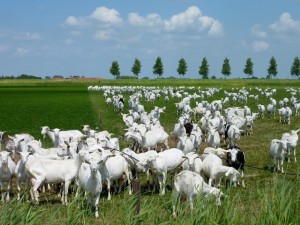 Knowledge of nutrition is particularly important given the role of feeding in ensuring animals are healthy and able to perform naturally and efficiently. Feeding is also the factor that most goat farmers can easily and quickly act on by adjusting quantity and quality as well as the method of providing nutrition. Sound nutritional strategies can contribute to developing resistance to diseases and the control of internal parasites as well as improved reproductive performance.
Knowledge of nutrition is particularly important given the role of feeding in ensuring animals are healthy and able to perform naturally and efficiently. Feeding is also the factor that most goat farmers can easily and quickly act on by adjusting quantity and quality as well as the method of providing nutrition. Sound nutritional strategies can contribute to developing resistance to diseases and the control of internal parasites as well as improved reproductive performance.
The quality and quantity of nutrition can be easily and rapidly managed, and since feed is often responsible for the majority of production costs, it is also a key factor influencing economic efficiency. Nutritional programs should account for the genetic characteristics of the breed or genotype used with regard to its production potential, ability to adapt, etc. Management of the sources of feeds, either as natural graze and browse, or the production, harvesting and storage of feed ingredients, will also determine the environmental impact of the farming system. Goats greater ability to browse trees and shrubs gives them an advantage over other domestic ruminants with regard to the manner in which they can contribute to enhanced natural resource utilization and efficiency.
Diverse diets
Although goats generally seek diverse foods in their diet, probably to ensure that the microbial and physiological environment in the rumen remains within an optimal range, they also prefer consistency with regard to the range of ingredients (Morand-Fehr, 2005). They are capable of switching quickly between feed types, and from herbaceous to woody plant materials. They also appear to be diverse regarding the timing of feeding of different plant types, feeding on different plants at different times of the day (Solanki, 2000).
Amongst the many benefits of offering a diverse diet to an animal is the opportunity to correct potential nutritional imbalances that can come from feeding single ingredient diets, as well as the possibility to limit the impact of the toxins contained in many feeds (Provenza et al., 2003). Goats learn to associate particular foods with particular after-ingestion effects and adjust their diet selection accordingly. Providing a diverse diet is an important component of a successful foraging strategy that enables them to reducing toxicity risk through selective feeding (Duncan and Young, 2002).
Free-choice Diets
When goats are offered a free-choice diet with multiple ingredients, they tend to select proportions of ingredients according to their physiological status e.g. they choose feeds that provide increasing protein as pregnancy progresses and increasing starch content during lactation. The advantage of free-choice systems is that a farmer does not need particular knowledge of nutritional requirements at stages of the breeding and production cycle (Fedele et al., 2002). Goats prefer species that offer the highest rates of nutrient intake, and they will adjust their preference depending on the comparative seasonal availability of nutrients (Dziba et al., 2003). There is evidence that ruminants, for example, also select hay that has been cut later in the day as it contains higher concentrations of sugars and starch (Fisher et al., 1999). It has also been shown that specific flavours of forage plants play an essential role in feeding choices (Rosa et al., 2002).
Feeding on rangelands
The rangeland areas of the world provide good conditions for rearing goats. The rangelands frequently have a mixture of open grazing and woody shrub plants and goats (and sheep) raised in these conditions develop an opportunistic and selective feeding behavior that allows them to make the most of the diversity of forage species and quality. Goats have narrow jaws that allow them to select from diets consisting of mixtures of live and dead tissue. They have the ability to adapt their eating behavior so that they vertically tug at vegetation in order to strip leaves from plants. Goats grazing on these diverse rangeland diets are able to eat a large mass of material at each bite and take longer between bites than goats that graze on grass-only pastures. This allows them to peruse the grazing area more effectively to ensure that they are able to best profit from the diverse forage on offer. Their ability to adjust their eating behavior enables them to make best use of the diversity of plant types in the rangelands, including the ability to attack plants at different angles and at different heights (Meuret, 1997).
Nutrition and Health
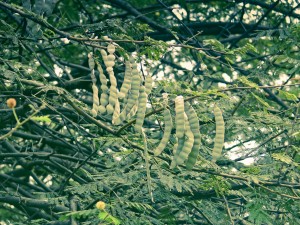
The quality and quantity of tannins in tree species e.g. Acacia spp can determine the extent of their anti-parasitic activity
It is well-established that nutrition can affect an animal’s susceptibility and its ability to resist parasitism (Van Houtert and Sykes, 1996) . Certain feeds also contain antiparasitic compounds (Coop and Kyriazakis, 2001). Protein supplementation has been shown to enhance the ability of goats to resist gastro-intestinal parasites (Chartier et al., 2000; Faye et al., 2003; Nnadi et al., 2007).
Goats are less resistant to nematodes than sheep, and for high yielding dairy goats, there may be competition for protein between the requirements for milk production and that required for the development of resistance (Eitter et al., 2000). The type and concentration of tannins in the diet will influence the comparative impact on the control of internal parasites, as has been shown with the incorporation of meal from different species of Acacia tree into the diet of goats (Kahiya et al., 2003; Max et al., 2007). More on tannins below.
Tannins
Tannins present in some tree and shrub species can have varying and sometimes unpredictable effects when consumed by ruminants, ranging from beneficial to toxicity and death (Makkar, 2003). Tannins in the diet form complexes with some proteins and prevent rumen bacteria from breaking them down (McSweeney et al., 2001), although some goat breeds have been shown to be immune to the effects of tannins in some tree species (Lee and Lee, 2002).
It is possible to make these species more acceptable to browsing animals. Addition of polyethylene glycol (PEG) has been used to neutralize the effects of dietary tannins on nutrient digestibility enabling goats to consume greater proportions of high tannin diets (Landau et al., 2002; Landau et al., 2003, Bhatta et al., 2002). Offering high protein supplements can also have the same impact on increased intake of tannin-rich plant species (Villalba et al., 2002). This provides opportunities to not only increase diet diversity but also to enable control of otherwise tannin-rich dominant tree and shrub species found in some rangeland pastures.
Nutrition and Reproduction
Nutrition can influence ovarian activity, which in turn can impact on fertility, especially ovulation rate and targeting supplementation can result in increased litter size. The response of females to the male effect can also be influenced by improved nutrition and supplementation. However, the extent to which nutrition impacts on reproductive efficiency will always be constrained by genetic potential and environmental constraints. The Angorra breed is a good example of nutrition affecting reproduction. Typically they have a single ovulation under most production conditions but under very good nutritional conditions they may have two ovulations (Fatet et al., 2011). For more on Reproduction
Feeding for lactation and pregnancy
For dairy goats, energy intake is the most limiting factor. During early lactation, the demand for energy tends to be greater than an animal is able to consume, and at this time does will very efficiently use body reserves to meet the nutritional demands for milk production. Later in lactation, some of these reserves will be replenished, provided the diet is sufficient. This process of replenishment will directly impact on the does ability to conceive during lactation. In order to achieve optimal production levels, and to avoid nutritional deficiencies, feeding pre-partum to ensure sufficient energy reserves, can be critical. Whilst lactating goats require high energy density diets to ensure that production energy demands are met, diets that are of excessively high energy densities can also have negative health impacts, including conditions such as fatty liver.
During the first 100 days of pregnancy, although foetuses are rapidly developing, their growth in relation to energy demands is low and the pregnant doe only requires the additional nutrients over and above maintenance and activity required for milk production. During the last trimester of 50 days, the nutrient requirement of a pregnant female increases dramatically, as a consequence of rapid foetal and mammary gland growth. This will be exacerbated depending on litter size, particularly since the number of foetuses will influence the space available for food within the abdomen. At this time, does carrying multiple foetuses will require energy dense feeds to compensate and a failure to provide sufficient energy can lead to metabolic disorders such as pregnancy toxaemia.
Mineral Nutrition
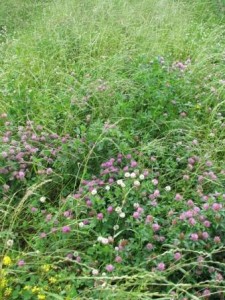
Legumes (front) tend to be higher in minerals than grasses (rear)
The mineral requirements of goats are not as well defined as they are for other common farm animals. There also appears to be some variation in the estimated requirements for commercially managed dairy and meat goats as compared with indigenous breeds managed under natural semi-arid conditions (Araújo et al., 2010).
What factors influence mineral content of forages?
Specific mineral deficiencies tend to be associated with specific regions and soil types. Younger, alkaline soils tend to have greater mineral abundance than older, more acid soil formations that have suffered significant leaching and weathering and areas with higher rainfall and temperatures are also likely to suffer depletion. Plant species can also be important. Forbs and legumes tend to have higher mineral levels than grasses. Mineral content also declines with age of plant, partly because the content gets diluted as the plant grows, but also because nutrients are translocated to the root system as they mature. The extent of this seasonal variation tends to be less for the micronutrients than the macronutrients (Machen, no date).
What are nutritional requirements?
The nutritional requirement of goats for minerals can be rather variable. A deficiency threshold value of a nutrient is the minimum requirement below which will result in the occurrence of pathological conditions. The apparent minimal requirement of a nutrient is the value that avoids possible decreases in production over relatively short periods of time. Although minimal requirements are used in practice, they can be restrictive as they do not account for any bodily mineral reserves. The optimal requirement is the level that assures a zero balance in adult animals and enables young animals to grow. The recommended dietary allowance is higher than the optimal level as it also includes a safety margin that accounts for the variations that inevitably occur between individuals (Meschy, 2000).
The key minerals
Calcium is the most abundant mineral in the body, with most of it being found in teeth and bones. It also has a function related to blood clotting, heart, muscle and nerve function as well as in enzyme activity. As the amount in the diet increases, the rate of absorption declines. Cereal grains tend to be low in calcium. The mineral requirements for milk production will in part depend on the stage of lactation, with the requirements per litre for calcium and phosphorus declining as the lactation progresses.
80% of the phosphorus (P) in the body is found in teeth and bones, but it also has a key role in metabolism, as a component on DNA and is necessary for optimal growth and activity of rumen microbes. Oilseed meals are a good source of phosphorus. A requirement for goats of no less than 3.0 g P/kg Dry Matter in the daily feed ration is advised to avoid nutritional deficiencies. A content of 2.0 P/kg Dry Matter leads to serious reproductive, growth and milk production failures (Haenlain and Anke, 2011).
Calcium and phosphorus requirements for pregnancy are probably higher in goats than sheep and cattle because of the frequency of multiple foetuses. The calcium and phosphorus content of goat milk (1.3 g Ca/l, and 0.9 g P/l, respectively) are very similar to milk from cattle. The mean mineral composition of goat’s milk (Guéguen, 1997 cited by Meschy, 2000) is shown in the table below
| Macro-elements | (grams/litre) | Micro-elements | (milligrams/litre) |
| Calcium | 1.26 | Zinc | 3.8 |
| Phosphorus | 0.97 | Iron | 0.46 |
| Potassium | 1.9 | Copper | 0.22 |
| Sodium | 0.38 | Manganese | 0.06 |
| Magnesium | 0.11 | Iodine | 0.07 |
| Chlorine | 1.1 | Selenium | 0.02 |
Oilseed meals and green, growing forage are good sources of potassium (K), which is needed for osmotic and fluid balance in the body. Grains and mature forages are likely to have low levels.
Magnesium (Mg) plays an important role as a catalyst for many enzymes and is also found mainly in the skeleton.
Ruminants are able to synthesise all of the important sulfur (S) containing compounds from sources found in the diet, including two of the essential amino acids methionine and cysteine. The two B-vitamins, biotin and thiamine are also sulfur-containing compounds. High levels may interfere with copper and molybdenum uptake.
Whilst goats are sensitive to Molybdenum (Mo) deficiency, they can tolerate much higher levels without showing toxicity symptoms compared with cattle and sheep. Molybdenum deficient rations fed to goats can impact on reproductive efficiency and cause depressed growth (Haenlain and Anke, 2011). Goats are however sensitive to iodine (I) deficiency.
Pregnant and new-born goats, particularly after multiple births, are sensitive to selenium (Se) and copper (Cu) deficiency, which can cause white muscle disease or swayback. Goats are less sensitive to copper toxicity than sheep and cattle and they are also able to tolerate higher levels of dietary copper.
Antagonistic mineral relationships and effects
There are various inter-relationships between several minerals that must be seriously considered when providing mineral supplement to goats, especially when it is offered free-choice, as excesses or deficiencies in some minerals can cause disturbances to the actions of other minerals (Haenlain and Anke, 2011). For example, deficiencies in zinc can cause excesses in copper and vice versa, adding sulfur to copper deficient kids can exacerbate the detrimental impacts of the copper deficiency, especially if the sulfur is added in the form of the sulfur-rich amino acid methionine.
Bentonite clay is high in iron. Adding this as a supplement to a normal goat ration has been shown to cause significant decreases in copper levels in their meat and milk. Phosphorus deficiency has been shown to increase the copper content of body products (Haenlain and Anke, 2011).


 British English
British English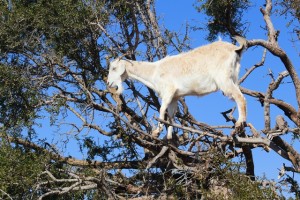
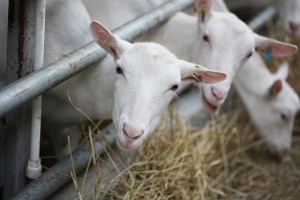
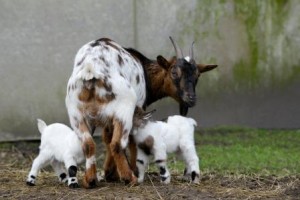


Comments are closed.